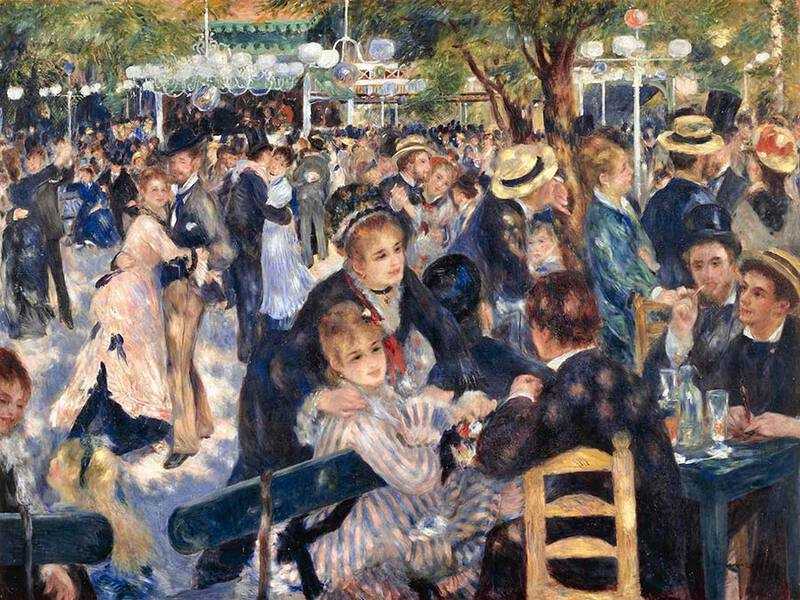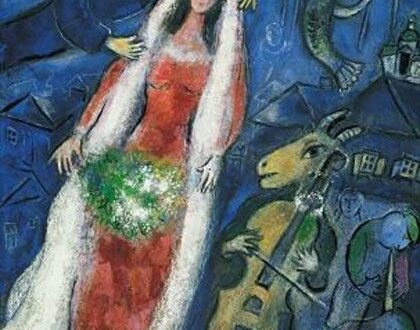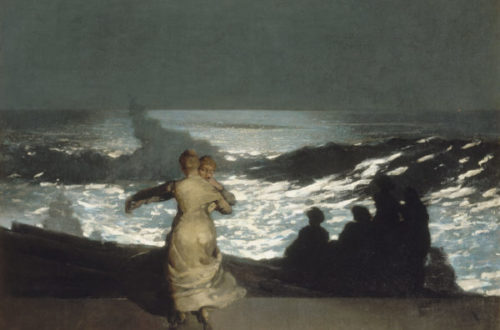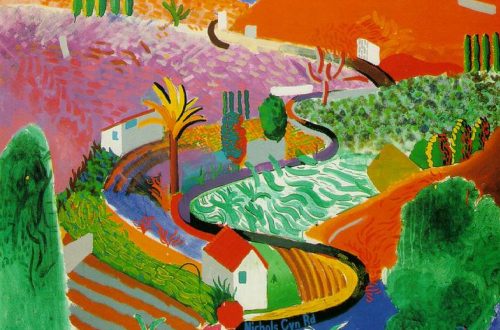The depiction of modern city life is no stranger to both the Impressionism and Expressionism art movements. Artists at that time were eager to reflect the rapidly changing urban landscape of the late 19th century and early 20th century. Despite their stark differences, Impressionism and Expressionism share a remarkable amount of similarities in terms of subject-matter, techniques and themes. Their rejection of traditional artistic styles is the most distinctive common feature which binds these two modernist movements together. However, while Impressionism was focused on capturing the fleeting moment of real-world subjects in plein-air landscapes, Expressionism can be seen as part of artists’ vivid emotional response and subjective perspective to the dehumanizing effects of urban society.
Introduction to Impressionism and Expressionism
Impressionism and Expressionism both shook the world of traditional painting and heavily influenced the course of art history. They emerged as a reaction against conservative institutions and traditional artistic practices and as every artistic movement, they were a reflection of their time. Impressionist painters were fascinated by real-world subjects and individuals, such as everyday life for common people in Paris and rural areas. Expressionism emerged as a criticism of urban society and materialism, addressing feelings of anxiety and alienation. Rather than being concerned with objectivity and real-life subjects, Expressionist painters represented subjects navigating the dehumanizing effects of modern, urban life.
Origin and History of Impressionism
Art critic Louis Leroy is at the origin of the term “Impressionism” in his 1874 review titled The Exhibition of the Impressionists published in the satirical newspaper Le Charivari. In late 19th century France, historical, portraits and religious subject-matters were the only accepted themes at the Académie des Beaux-Arts, while landscapes and still life paintings weren’t considered to be suitable subjects to the eyes of the Académie jury. The Impressionists group, led by Claude Monet, Edouard Manet, Pierre-Auguste Renoir and Camille Pissaro, among other artists, changed the status quo and pushed forward brand-new ideas in the form of contemporary, anti-establishment, real-world landscape paintings, which emphasized the need to go against the style prevalent at the time. This wasn’t met with open arms by the general public, who criticized these paintings for being vulgar, too sketch-like in appearance and not ‘serious’ enough.
Origin and History of Expressionism
The term “Expressionism” was coined in 1910 by Czech art historian Antonin Matejcek. Matejcek pointed to the fact that Expressionism was a direct reaction to the aesthetic principles and social values linked to the Impressionist movement. Expressionism emerged in 1905 in the city of Dresden, Germany, when four students Ernst Ludwig Kirchner, Fritz Bleyl, Erich Heckel and Karl Schmidt-Rottluff who joined forces to form Die Brücke (“The Bridge”), as a reaction to Naturalism and Impressionism. Expressionists were much more interested in emotional depth and the complex effects of industrialization on the human psyche. While it did not receive the same initial critical backlash as Impressionism did, Expressionism still suffered from being banned by the Nazis who deemed it ‘degenerate’ art, too far removed from the beloved Neoclassicism style, and considered to be dangerous to the notion of the Aryan race.
The Impressionist Style: Freedom, Light, and Color
The Impressionist style is defined by spontaneous brushstrokes and a vibrant, bright and contrasting color palette. Paints were purposefully unmixed and instead juxtaposed together. This gave the impression order to capture the fleeting moment or a particular mood and give the impression that the painter had briefly glanced at a scene and was painting from memory, with a lack of detail. Impressionists placed a strong focus on everyday scenes and the effects of sunlight and its reflections.
They were fascinated by the world around them. The city was a key subject for Impressionist painters and all the discoveries made by the industrial revolution which had been driven by technological progress (steam train, cities, streetlights…). Impressionists were also keen to depict landscapes, painting directly what they saw in nature. They observed subjects in mid-task, such as pic-knickers, farmers working the land or people engaging in leisurely countryside activities.
Famous Impressionist artists and artworks
“The richness I achieve comes from nature, the source of my inspiration.” (Claude Monet)
Impression, Sunrise (1872) is an oil on canvas painting by Claude Monet. Monet depicts the port of Le Havre, which features fishing boats in the foreground and a foggy, smoky industrial background. Colors are muted and understated while details are hard to distinguish. The hazy quality of Impression, Sunrise suggests an overall impression of the painter’s attempt to capture a fleeting moment. Art historian Paul Tucker suggests that “While it is a poem of light and atmosphere, the painting can also be seen as an ode to the power and beauty of a revitalized France”. The painting has an optimistic undertone and can be seen as an ode to the beauty and promise held by the great beginnings of industrialization.
The Expressionist style: bold, distorted, and emotional
Expressionism is characterized by gestural, rapid and distorted brushstrokes. Artists used bold, unrealistic, highly-symbolic colors that had no apparent relation to their subject-matters. Expressionist paintings are highly subjective, intuitive and emotionally charged, tackling issues around alienation, frustration and isolation. Paints are applied in copious amounts to create a lot of texture on the canvas, which mirrors the artist’s powerful emotions. Subjects, angles and views appear to be distorted as opposed to showing things as they are. There is a distinct lack of technical precision highlighting the artist’s personal vision Some expressionist paintings have an unsettling, almost violent quality to them, while others are more sensual or atmospheric.
Famous Expressionist artists and artworks
“A painter paints the appearance of things, not their objective correctness. In fact, he creates new appearances of things.” (Ernst Ludwig Kirchner)
Street, Berlin (1913) is an oil painting by Ernst Ludwig Kirchner which depicts two prostitutes (symbols of modernity) in the central foreground, as they are seen walking down the streets of Berlin and being watched by men. The use of intense, clashing and exaggerated colors combined with visible brushstrokes and distorted, bended bodies heightens this impression of disequilibrium, solitude and alienation emanating from the scene. Kirchner’s portrayal of everyday life in Berlin reinforces this sense of danger, chaos and anxiety that is often found in German Expressionism.
Similarities between Impressionism and Expressionism
- Both the Impressionism and Expressionism movements originated in Europe. The Impressionist movement was born in France while the Expressionism movement started in Germany and Austria.
- Both art movements were a rejection of classical art traditions. They are considered to be avant-garde in their portrayal of modern life.
- Both the Impressionism and Expressionism Art Movements were a reaction to the rapidly changing urban landscape of their time.
- Both movements share the use of innovative techniques. Impressionism departed from the strict codes imposed by the traditional Realist and Romantic styles, which valued “blended brush strokes” and “muted color through the use of golden varnishes” (source: Erin Hansen). Instead, Impressionist painters depicted subjects using small, thin and visible brushstrokes of bright colors. Expressionism was a reaction to Positivism and Naturalism. They painted characters and environments with an element of mysticis, using bright colors, angular lines, distortions
Main differences between Impressionism and Expressionism
- As opposed to Impressionism, Expressionism is less concerned with depicting real-life subjects. Instead, this art movement is directly focused on the heightened, excessive emotional response of the artist to the dehumanizing effects of industrialization.
- Impressionist painters depicted outdoorsy scenes as if they had only glanced at it for a brief moment, conveying a spontaneous, ‘on-the-spot’ feel.
- Expressionist painters used exaggeration, disproportionate sizes, distortions and preferred intense, showy and clashing colors as opposed to Impressionists, who preferred vibrant, pure and complimentary colors in an effort to accurately mirror the changing quality of sunlight.













